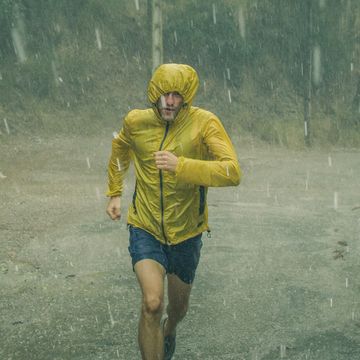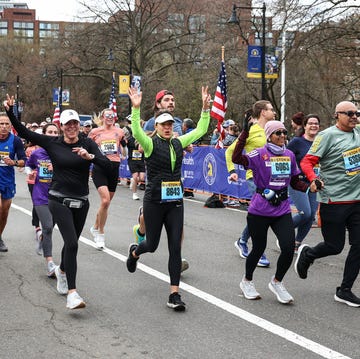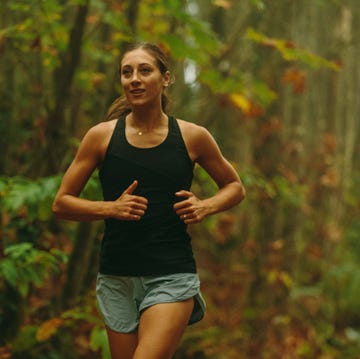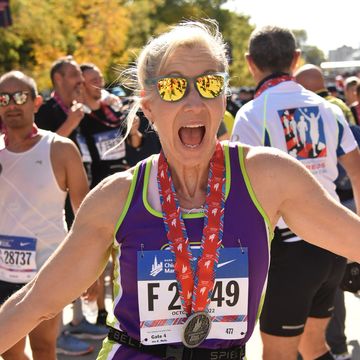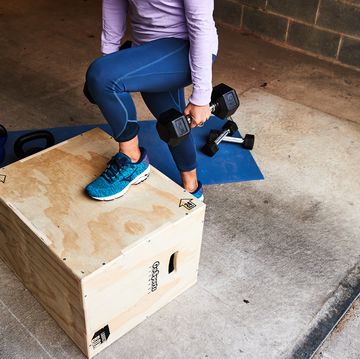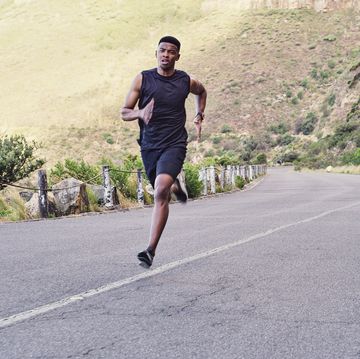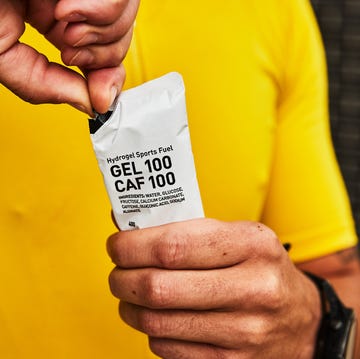I went to my first high-school cross-country practice freshman year in jean shorts, mostly walking as I heaved and huffed. I wasn’t good at running. During races, I fantasized about running into a tree, tumbling down a hill into a creek, getting attacked by a bear—any misfortune that would stop me from racing. Every XC meet played out like a scary movie in my head.
Almost every year, our team traveled from Long Island, New York, to Providence, Rhode Island, to participate in the Brown Invitational 5K. I carted a camcorder with me on the bus ride and ferry our first year with one intention: to film a horror movie. The plot was simple: XC teammates fall prey to a mysterious killer at a hotel the night before their big race.
We may earn commission from links on this page, but we only recommend products we back: Run to the Death, CA Notice at Collection, and Run to the Death 3: You Can Run But You Can’t Hide. They were low-budget (really, no-budget) shorts with murders that required a suspension of reality: a slow fall down a carpeted stairwell; strangulation by French-braided pigtails; a rock not quite hitting the killer’s head as our final girl, the last survivor, avenged her teammates. We spent babysitter money on fake blood, ugly masks, and a mullet wig.
The first two movies are stored away in my parents’ house, in a cabinet hoarding old Disney video cassettes. I refuse to play the XC movies, wary of my demented VCR’s rusty maws. The third film, the only one I computer-edited with my teammate Jackie, was accidentally deleted and lost forever.
It’s been almost 20 years since high school graduation, but I think about those XC movies often. To me—a five-foot-tall 14-year-old with two-foot-long braids whose love for running and horror (I was actually terrified of scary movies as a kid) was yet to bloom—they’re relics of my own lore.
My high school was small. I graduated in a class of 120, and we were eight girls, at most, on the XC team. I was usually at the back of the pack, rarely counting in scoring (only the first five runners from each team who cross the finish contribute points at a meet). We didn’t necessarily hang out outside of practice; different grades, different social circles. But in XC we were free to just be. We were absolute goofballs on the track and discovered how sweat, spit, and snot were great equalizers.
I wanted to know if any of my other teammates, millennials now in their mid-30s, had felt the same way about making the movies and being on the team. I dropped into their DMs on Instagram.
“Does anyone still have that movie we made? I would die to watch that lol,” said Carolann.
“Do you remember how you felt filming these?” I prompted. “I think at some points I was a little controlling. I had a vision.”
“I do recall you being very passionate about the project,” said Jackie, who was the first movie’s final girl. “I think we made these because we were kids and kids do silly things together. A lot of us on the team were creative types.”
“For me, it was about going on a trip with a bunch of great people,” said Kim, another teammate and Jackie’s older cousin. “As far as the horror films went, I was the theater kid giving XC a shot, so any avenue for creativity was one I was happy to go down.” My teammates encouraged me to reach out to our former coach, Dave Oakley. He had retired in 2014 after coaching XC and track for almost 40 years.
“Do you remember Brown Invitationals, when you let us film scary movies at our hotel the night before the race?” I said on the phone.
“I remember you girls doing that, but you always went in early because of lights out,” he said.
“Yeah…sure.”
Dave, now 76, did the typical thing most of us Northerners do after retirement: He moved to Florida. He’s been taking a break from running due to some underlying health issues. He and his wife visit up north throughout the year to see family (he’s a grandfather of eight).
How Do You Hydrate on Runs Run to the Death, but as the conversation went on with my old coach, I realized what I really wanted was to express gratitude.
“It’s not like I had a horrible high school experience,” I said to Dave. “Most of what I can recall during my teens makes me cringe. But I can’t say that includes XC.”
Jackie had put it this way in our IG chat: “I remember being on the team as one of the only areas in high school where I felt like I fit in. Day to day in school was kind of bleh: isolating, forced, loud, and long. But at practice, we could run out in nature together and talk with each other. Like, actually connect one-on-one. Cross country is perfect for introverts.”
I told Dave how even though I was a slow runner and really didn’t like to run, I still felt like I was a part of the team. And then, mid- college, when puberty was finally over, my times got shorter and I felt better racing, and then I started running marathons. It’s crazy thinking about who I was then and who I am now, I said. Dave sounded less surprised.
“People go to races and see this big guy thinking he’ll win. But I’d say to them, ‘Oh, no, it’s that little guy with a big heart you have to look out for,” he said.
I’ve included the beginning of the script (opposite page) of the third film, in an effort to resurrect the mullet wig Dave gamely wore for his cameo.
Advertisement - Continue Reading Below Runner’s World’s Test Editors, has run in the Boston Mara thon consecutively since 2013 and joined the sub-3 club at the 2022 Chicago Marathon (2:56:31). She has ceased training her one-eyed cat, Fiona, to compete in Canicross. Instead, they have three eyes on the Iditarod. Their new feline recruit, Sidney, shows purr-omise.
Amanda is a test editor at Runner’s World who has run the Boston Marathon every year since 2013; she's a former professional baker with a master’s in gastronomy and she carb-loads on snickerdoodles.


